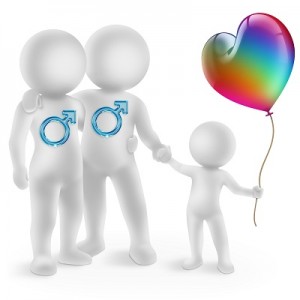Adoptions on the Decline
Policies are getting stricter when it comes to adopting overseas children. A rising demand for babies and a declining interest in older children means many kids looking for a new home will face tough odds. More and more people are looking to adopt overseas children and would rather bear the cumbersome wait and paperwork than adopt in country.
Organizations like the NDA believe that the complexity of the adoption process is a major roadblock. They are trying to simplify guidelines and reduce delay in highly regulated countries like India. Slow processing and database errors create bottlenecks for agencies like the Central Adoption Resource Authority (CARA).
Despite high infertility rates and a rising percentage of childless couples, adoptions as a whole are on a steep decline. Recent CARA statistics reveal a 16 percent drop in domestic adoptions in 2013-2014 as compared to 2012-2013. The farther back the data, the more concerning the decline. United States adoptions are a mere fraction of what they were a decade ago. However, international adoptions of Indian children increased nearly 40 percent in the past year.
Celebrity Adoption
Celebrity adoptions have many people to looking overseas to add a new family member. Overseas adoptions are seen as a mark of status, and many upper class couples deem it “unfashionable” to adopt locally in the United States. It may not be their intention, but celebrities may be inadvertently making it harder for foster children in the states to find new homes. Famous figures like Faith Hill, Jesse Jackson, and even Bill Clinton were themselves adopted children, while others like Angelina Jolie and Sandra Bullock have helped encourage adoption, albeit mainly outside the country.
Declining International Adoptions
Despite a rising interest in adopting outside the states, international adoptions have dropped by nearly two thirds from 2004 to 2013. Is it better for children to stay in their homeland, even if it means they live the rest of their lives as orphans? Are we as a society too addicted to comfort and unwilling to take on a difficult task? Outspoken adoption advocates might agree, but experts have a more compelling explanation.
Experts claim that the decline is due to stricter adoption laws and an increased aversion in countries like Russia and China to sending foster children overseas. There are still plenty of orphans waiting for new families, and plenty of parents looking for them. In fact, Susan Caughman, publisher at Adoptive Families Magazine, reports that parents are enamored with the idea of raising a child from “rags to riches.” And despite the prominent drop-off in the past decade, the United States still adopts more children internationally and domestically than the rest of the world combined.
But the numbers are still trickling, policies tightening, and magical endings fading. A survey by Newcastle University in Britain revealed that international adoptions in 2011 were almost cut in half compared to 2004. What does the future hold for orphans?
Utah Adoption Statistics
Data from Utah adoption agencies reveal some disheartening truths. Statistics reveal that children nine years of age and older are much less likely to be adopted than their younger counterparts. Adoption rates also differ drastically by race – nearly 70 percent of adopted children are Caucasian, compared to only three percent for African American children. Foster family placements make up 46 percent of all adoptions.
Tragically, not all children are lucky enough to meet new parents. Many children grow too old to remain in foster care and end up at risk for homelessness, depression, drug abuse and unemployment. In total, approximately only 27 percent of children placed in foster care go home to adoptive parents.
Same-sex Adoptions Statistics
Laws pertaining to the gay community remain a heated issue. A Princeton survey found that 39 percent of respondents opposed gay adoption, with 8 percent unsure. While these numbers are likely to change as laws and public opinion evolves, many are still on the fence, especially concerning the stigmatization of children adopted by gay parents. A study published in the Journal of Developmental and Behavioral Pediatrics revealed that half of children with lesbian parents are stigmatized, with two thirds of them developing successful coping mechanisms.

Sixteen states currently allow joint gay adoptions, while 11 allow second parent adoptions. In most states, gay adoption petitions are evaluated on a case-by-case basis, with no overarching laws in place. Florida recently overturned its ban on gay adoption. However, gay couples still cannot adopt in Mississippi or Utah.
How Much Does it Cost to Adopt a Child
Many couples looking to adopt a child are surprised by the sheer cost. There are many more steps in the adoption process than most people realize, and those accumulated expenses can really add up. Below is a brief overview of possible costs for adoptions.
-
Parent education services such as counseling, information sessions, travel, and post-adoption checkups
-
Medical expenses including prenatal care, delivery and pediatric exams
-
Housing, transportation, food, clothing and foster care
-
Legal procedures including drafting birth certificates, legal counsel, attorney fees and adoption proceedings
-
Background and income checks
-
Advertising costs
-
Business and insurance costs
If you’re on the fence aboutadopting a child, call the experienced attorneys at Schmidt Law.With over 18 years of experience in family law, we’ll help you understand your rights and options, learn your situation, and give you the tools you need to make the best decision.
Leave a Reply